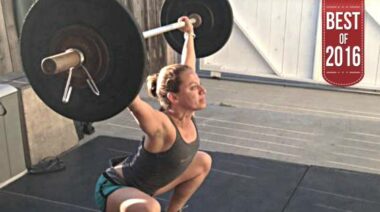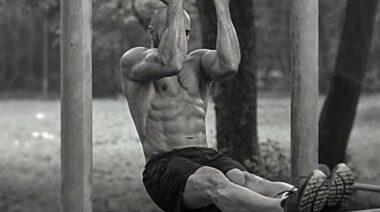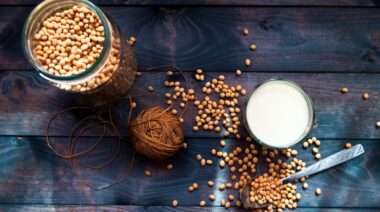One of the most common refrains I hear from clients is, “I’m always hungry.” We’re in the midst of an obesity epidemic, where caloric surplus is the norm, yet we’re still chronically hungry and looking for energy throughout the day. Experts trying to solve the crisis seem to have created a new battleground as “diet wars” now rage online and in academia over which diet and macronutrient ratio is best to combat weight gain.
From an evolutionary perspective, regardless of whether you consumed the ancestral high-carb diet of the Kitavans or the very low-carb, high fat Inuit diet of the north, both cultures were virtually free of diabetes and metabolic diseases until the introduction of the Western diet.
Metabolic diseases was virtually non-existent until the introduction of the Western diet. [Photo credit: Pixabay]
The Problem with the Western Diet
The Western diet is chock-full of processed convenience foods that are high in added sugar, harmful trans fats, food additives, and artificial sweeteners, and are deficient in fiber and key micronutrients.1 While these all contribute to excess caloric intake and potentially weight gain, their impact on your brain and your cravings is just as detrimental.
Obesity researcher Dr. Stephan Guyenet has delved deeply into the notion of food “hyper-palatability”—how processed convenience foods are engineered to elicit major responses by our brains, kicking up dopamine levels and driving “food reward” that leads to you craving more and more of these tasty snacks.
Here are some of Dr. Guyenet’s insights on hyper-palatability of foods and weight gain:
- Approximately 70% of the average American diet is from processed foods.2 In 1980, there were approximately 15,000 convenience foods available in supermarkets, while today that has exploded to over 43,000. Dr. Guyanet believes the greater the variety of foods, the more calories you’re likely to consume.
- Over the last twenty years, our total daily caloric has increased by 425kcal per day and “snacking” accounts for 77% of this total increase.3 Dr. Guyanet believes this is sufficient, on its own, to explain the rise in weight gain over the past two decades.
- The greater the “palatability” of the food, the more calories typically people will consume in one sitting.4 Sounds obvious, but in real-terms this means the tastier your treat or snack (from sugar or additives) the more you’ll consume.
Hyper-Palatable Foods and Your Brain
The brain is constantly seeking reward, and processed foods are engineered to stimulate your brain to want more via the addition of sugars, artificial flavours, salt, and fats. Smell, taste, texture, appearance, and proximity all play key roles in influencing how much of a certain food you will eat. For example, our brains are far more likely to want a snack if it’s close by (i.e. in your desk drawer) versus three-blocks over at a local café. So it’s difficult to resist when your office mates bring in a box of donuts, or when you pass by the candy store on your commute home.
Hyper-palatable foods make us far more likely to snack, and the implications on our waistlines are significant. A recent study looked into the impacts of consuming excess calories on weight gain when consuming only three square meals versus multiple meals (ie. three meals and two snacks) daily. Researchers found that if you overconsume calories, the effects are far worse when you consume them in more than just three meals a day.5
Ironically, if you ask the average person about weight loss, they’ll likely repeat the old mantra, “eating multiple meals throughout the day increases metabolism and is good for weight loss”. Unfortunately, this old dogma is a myth. A recent meta-analysis found no benefit of multiple meals on metabolism and fat loss in overweight people.6
How to Fight Off “Hyper-Palatable” Foods
Today, constant hunger is far less likely to be due to a true lack of energy and much more likely to be due to hormonal dysfunction (e.g. high insulin), nutrient deficiencies, dehydration or simply boredom. Most people internalize their inability to skip the snacks or avoid that nighttime treat as some type of personal flaw.
But what if the foods themselves were designed to achieve this trait? Processed convenience food companies use added sugars and artificial flavours that stimulate your brain to want more. That’s right: expert scientists are employed to come up with the tastes, textures, and aromas that stimulate your brain and maximize the food reward signal.
If all the extra calories are creating hormonal and metabolic havoc, how can you reboot your brain to not crave the hyper-palatable foods in every gas station, pharmacy, convenience store, and grocery store around? One simple strategy is to kick snacking to the curb. Here are a few options for different periods of the day:
Snack (AM)
After breakfast, go straight through until lunch without breaking for a snack. If you’re used to nibbling on snacks mid-morning, be warned you’re likely going to “crave” food in the first few days. However, remember this is not likely because you need energy, but more so reflects poor blood sugar control and your body’s over-reliance on burning carbs, which impairs its ability to break down fats to balance your blood sugars.
One great tip is to have a coffee mid-morning, as caffeine naturally reduces the PYY hormone in the gut that kicks up cravings. Most people notice that after a few days, the cravings subside and they can make it through easily to lunch.
Snack (PM)
Drinking coffee in the afternoon is not typically a good idea, as it can impair deep sleep at night. Milder forms of caffeine, like black or green tea, or dark chocolate (70% or more) are better alternatives to get you through the natural circadian low we all get in the afternoon (made worse by poor blood sugar control or excessive caffeine intake). If you’re really struggling, go for veggie snacks like cherry tomatoes or bell peppers.
Late Night Snack
After a long day, you finally hit the couch and the stress of a busy day is acutely relieved by a sweet treat. However, as the days roll by you can easily become Pavlov’s dog, wanting a sugary treat as soon as the TV turns on. Drinking water or adding a non-caffeinated herbal tea can help overcome the need to have something at the end of the day. This can be a really tough time of the day for people. For some, toughing it out and going cold turkey can do the trick. For others, tapering off by snacking on frozen berries or grapes is a nice stopgap until you can cut off the snacking completely.
Get Your Health on Track
The issues caused by the Western diet, namely blood sugar dysfunction, diabetes and metabolic diseases are enabled by manufactured, highly palatable snack foods. The urge to eat is not an internal flaw, but rather the result of a food carefully engineered to make you want more. Cutting back on convenience foods and sticking to three square meals per day is a great place to start to lose weight and get your health on track.
More on getting past comfort-food strongholds:
How Stress Makes You Crave Food and Store Fat
References:
1. Cordain L, et al., “Origins and evolution of the Western diet: health implications for the 21st century“. Am J Clin Nutr February 2005 vol. 81 no. 2 341-354.
2. Federation of American Societies for Experimental Biology (FASEB), “Highly processed foods dominate U. S. grocery purchases.” ScienceDaily, 29 March 2015.
3. Guyanet, S., “Why Do We OverEat? A Neurobiological Perspective.” Retrieved from YouTube.
4. De Castro, J., “Social Facilitation and Inhibition of Eating.”
5. Koopman et al., “Hypercaloric diets with increased meal frequency, but not meal size, increase intrahepatic triglycerides: A randomized controlled trial.” ResearchGate, 2014 Aug; 60(2): 545–553.
6. Schoenfeld B, et al., “Effects of meal frequency on weight loss and body composition: a meta-analysis“. Oxford Journals. Retrieved from: nutritionreviews.oxfordjournals.org/content/73/2/69






